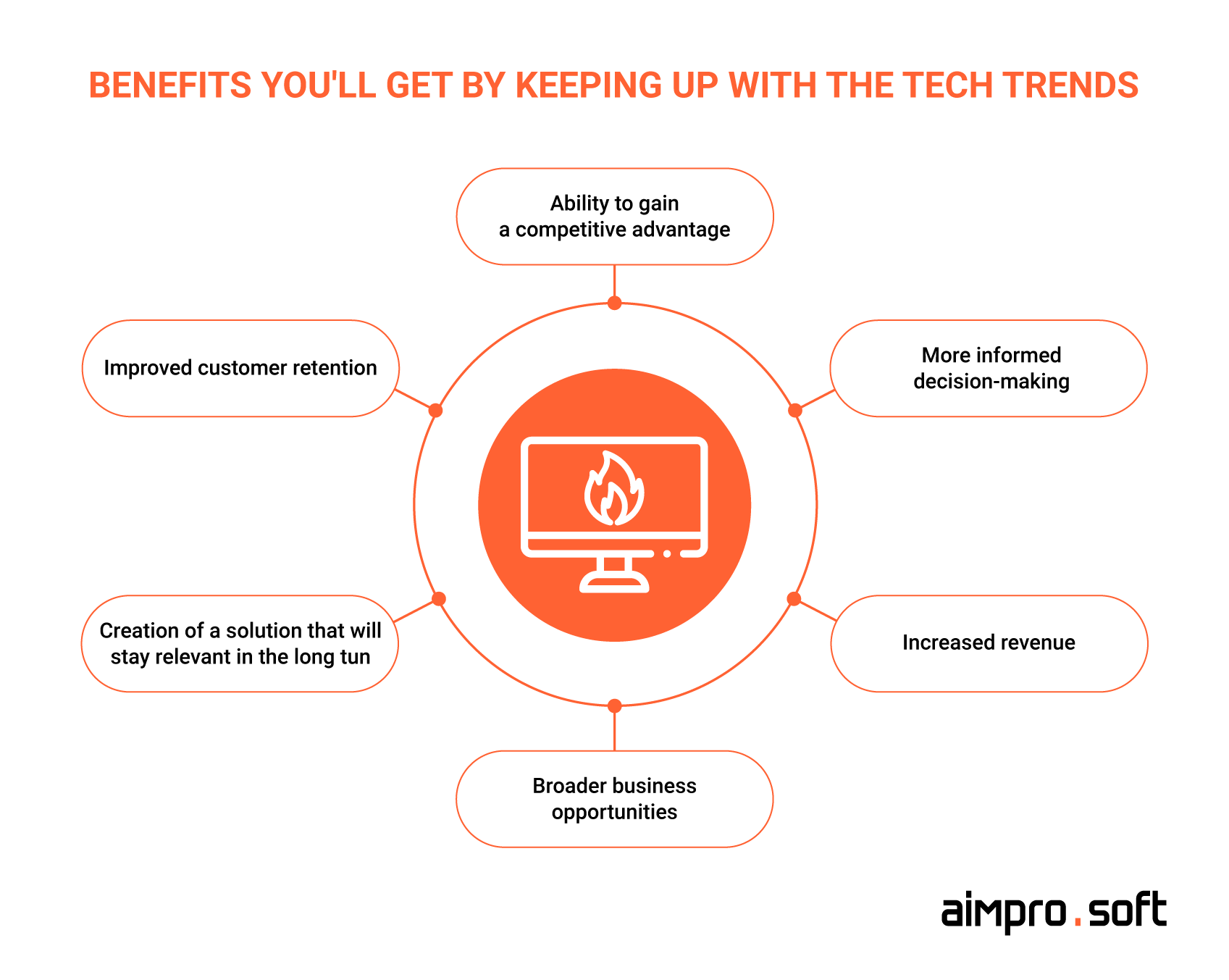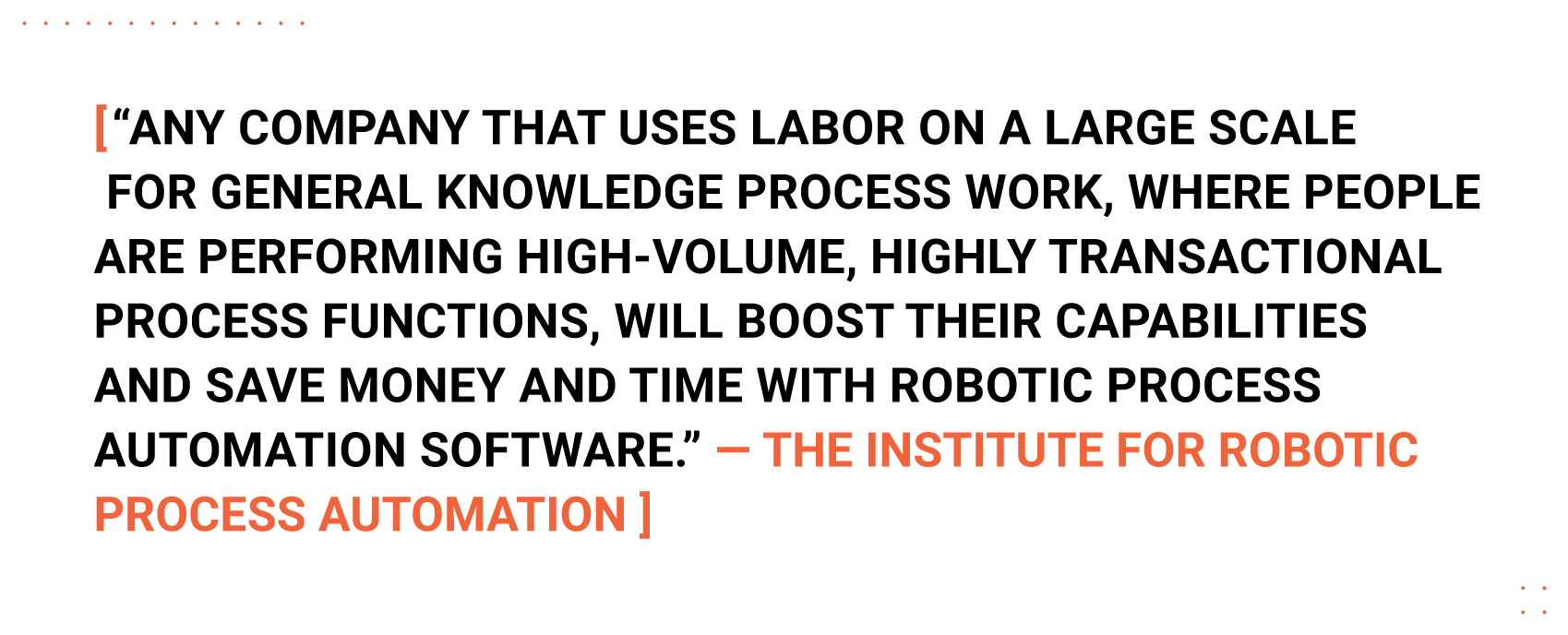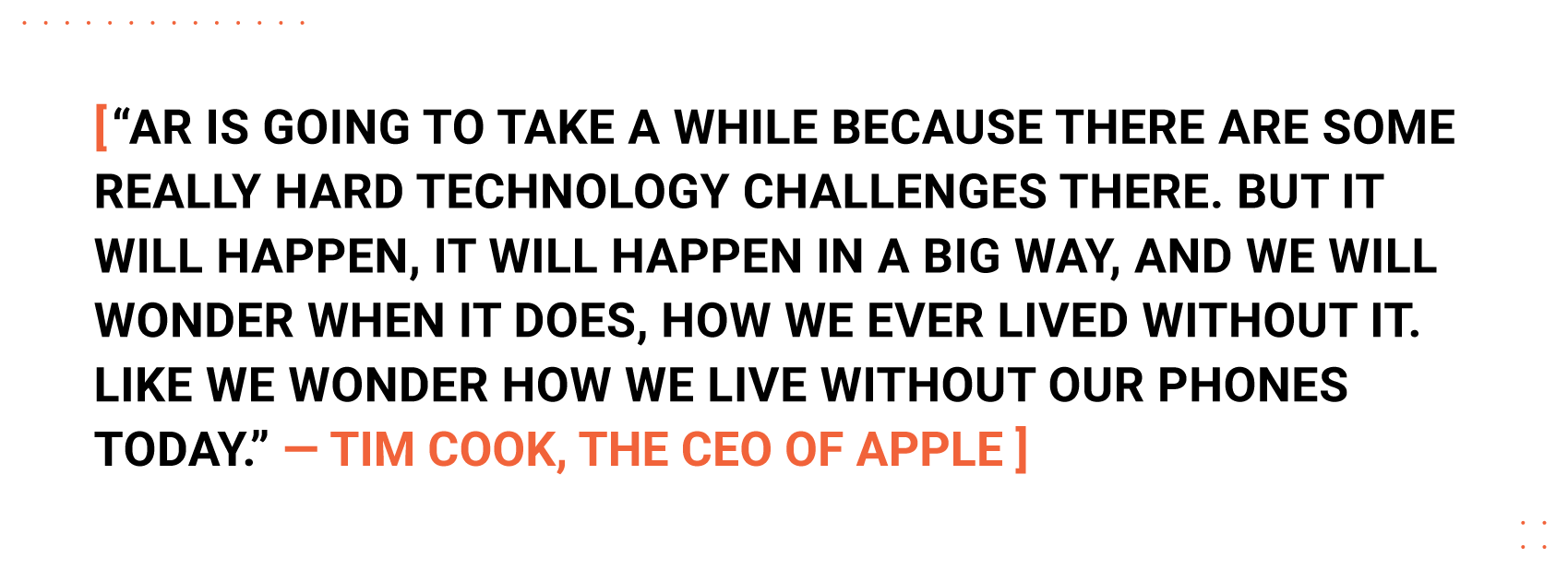Top 10 Technology Trends For 2024

Key takeaways
- Find out why companies should keep up with technology trends and what benefits adopting them can bring your business.
- It’s essential to embrace the exact trends that suit your business goals. Get valuable insights and tips on how to assess their relevance for your business and avoid the risks of following the buzz mindlessly.
- Get an in-depth overview of the most breaking 2024 top 10 technology trends.
- Staying one step ahead of your competitors is an invaluable advantage. Consider a few trending technologies that will be popular in the near future.
Last year was full of astonishing technological advancements; we’re sure 2024 will be even richer. The industry is evolving by leaps and bounds, but many innovative technologies raise questions and doubts. This is why half of the tech executives are not ready to optimize their IT processes according to new tech reality. The question is, what should you do in this case? Should you stick to tried-and-true tools and processes or transform your business to keep up with the market changes?
Well, if you stay where you are, you may not lose anything by not adopting new IT technologies and approaches. But what if you fall behind your competitors? What if their profits are growing and you’re standing still? We don’t think you want to be in that position, so let’s explore emerging trends and discover how to adopt them in a risk-free way.
Why should companies follow technology trends?
The IT market size has grown rapidly in recent years. It will reach $5 trillion in 2024, an increase of 6.8% from 2023. It is not surprising that in such a fast-growing field, there will be hundreds of competitors a few steps ahead of you, thanks to the timely adoption of innovative approaches. And what should you do in such a situation? Get ahead of the curve since it’s the surest way out. Our head of the development department believes that any company that wants to grow in the IT field should keep up with tech trends. Here are a few reasons why:

Benefits you’ll get by keeping up with the tech trends
Ability to gain a competitive advantage
John Chambers, director of Cisco, once said: “At least 40% of all businesses will die in the next 10 years. If they don’t figure out how to change their entire company to keep up with new technologies.” Therefore, if you want to keep your company from going bankrupt and still stay ahead of the competition, it’s crucial to anticipate and promptly react to changes in the industry, hence, being adaptive.
Keeping up with the latest technology trends allows you to develop proactive adaptation strategies, ensuring sustainable competitiveness and positioning you for long-term success in the marketplace.
Meeting customer expectations
With the development of digital technologies, customers are becoming more demanding of the products and services they use. In order to attract modern users and improve your customer retention rate, you should closely follow your competitors and changes within your niche to be able to integrate those enhancements that will be relevant to your business.
More informed decision-making
Keeping up with market trends and new technologies will help you to get more information you can use to make better decisions and efficiently adjust the existing strategy. A deep grasp of the market and trends in it will help you to make sharp decisions in managing your business, the route you take financially, and the products and services you offer. This preventive stance reduces the possibility of occurrences of risk and increases the chance of success.
Future-proof solutions
Incorporating the latest IT trends into software products allows companies to create forward-looking solutions. It means that companies can develop software solutions that not only meet current market requirements but also anticipate and adapt to the future of technology and challenges, ensuring sustainable success and competitiveness in the long term.
Possibility to increase profits
Remaining in the loop of new trends in technology allows companies to adapt their strategies, products, and services to meet changing customer needs and preferences. This adaptation often helps increase brand awareness and customer retention, leading to increased revenues. Adapting to the latest trends in information technology also fosters innovation and differentiation, allowing companies to offer unique products or services that appeal to customers.
Broader opportunities
Continuously staying updated with the latest technology trends ensures businesses take advantage of valuable opportunities. Remaining steadfast in familiar practices can result in overlooking the myriad ways to comprehend and engage with your customer base effectively. By embracing new technologies, you can unlock innovative methods to understand customer needs, preferences, and behaviors. This approach will allow you to quickly adapt to the changing preferences of your target audience and find opportunities to increase revenue.
Get in touch with Aimprosoft now and implement the innovative solutions of tomorrow.
CONTACT USWe have reviewed the business benefits of keeping up with top tech trends. But it’s always important to realize that not every trend you consider following will be useful for your business in particular. Let’s explore below a small guide on carefully identifying trends relevant to your company.
Don’t be blinded by all the buzz, follow the trends strategically
When examining current trends, don’t assume that it’s wise to adopt just any emerging tech trend that breaks the market. The relevance to your company’s specifics, your business goals, and user needs is much more important than mindlessly following popular trends. That’s why we have compiled a brief step-by-step guide on how to identify those trends that are worth following.
Identify current business needs
Conduct a comprehensive analysis of the company’s current problems, challenges, and goals, identifying areas where trending technology can provide solutions or improvements that align with the company’s long-term vision.
Research the market
Research industry trends, market needs, and emerging technologies relevant to your business and analyze competitors and customer preferences to understand how the technology can meet your needs.
Assess interoperability
Evaluate the company’s existing technical infrastructure, resources, and capabilities to ensure that the trendy technology matches the company’s expertise and implementation capabilities, including compatibility with existing systems.
Analyze the risks
Conduct a comprehensive risk analysis to identify potential problems and shortcomings associated with the technology implementation and assess security risks, compliance requirements, and technology compatibility considerations to mitigate potential disruptions.
Evaluate the complexity of implementing the technology
One of the first questions you should ask yourself is how complex the technology is to implement. If it is too complex, you will probably have a hard time finding the right developers to implement it, and if you do, it will be quite time-consuming. But that doesn’t mean you shouldn’t use complex technology; it’s important to realize it’s worth your investments.
Estimate how much it will cost you
How much will it cost to implement trending technologies or approaches? This includes not only the cost of development but also the cost of further support. Therefore, first, assess the financial implications of integrating a trending technology. Calculate the potential benefits in terms of increased revenues, cost savings, improved efficiency, or your customers’ satisfaction.
Want to avoid miscalculating the technology you choose? Find out how the discovery phase can help you.
So, now that you are armed with best practices on how to assess whether a certain tech trend is worth following let’s look at the latest technology trends themselves and see what executives should look for in 2024.
Technology trends that can transform your business
Some technologies have the power to transform the IT world, not just to improve the user experience or attract a larger audience. According to Gartner, a number of recent technology trends will significantly impact how IT companies operate and transform through 2025. So, it pays to stay afloat and jump into the ship sailing towards transformation in the software environment. Let’s look at the list of these robust technology trends 2024 to look for.
1. Adaptive AI
Adaptive AI learns and adjusts to user preferences and behaviors, utilizing machine learning algorithms to analyze user data and behavior patterns. For instance, customer service learns from feedback to enhance services. It’s a valuable tool for enhancing processes and customer experiences and maintaining competitiveness. Adaptive AI facilitates the development of intelligent systems for customer-centric applications across various industries.
A few interesting facts and stats about this technology:
- Gartner predicts that Adaptive AI is set to outperform its competitors by 25% by 2026, positioning it as a key player in the technological innovation landscape.
- From banking to healthcare, Adaptive AI is poised to transform industries by enabling smarter, more efficient processes and decision-making.
- Adaptive AI has been hailed as the top strategic technology trend of 2023 by Gartner, indicating its potential to reshape organizational strategies and operations.
- The real-time adaptive AI segment is projected to grow at a significant CAGR of 46.43% from 2024 to 2033.
Areas where the technology is most relevant
Adaptive AI covers a lot of fields, providing a unique roadmap for development and sustainability. This technological advancement exploits digital marketing immensely to target personalized campaigns and advertisements to particular users. Data-rich industries such as finance and healthcare also benefit in the same way, constantly improving efficiency without fixed rules. But that’s not all, let’s take a closer look at some of the most popular application areas:
- Healthcare industry
Adaptive AI development has the potential to revolutionize healthcare. Analyzing vast amounts of patient data optimizes diagnosis and treatment, leading to more effective patient care.
- Insurance processes
In the insurance sector, adaptive AI automates claims processing and detects fraudulent activities, ensuring efficient workflow and safeguarding against financial losses.
- E-learning
The education sector stands to gain significantly from adaptive AI. Educational institutions can continuously enhance their curricula and personalize learning experiences for students, fostering better academic outcomes.
- Transportation sector
Adaptive AI is being leveraged to improve traffic flow and reduce congestion in transportation systems. Analyzing real-time data, such as traffic patterns, optimizes traffic signals, leading to shorter commute times and smoother journeys.
Want to learn more about the future of AI technology? Read our in-depth research on the topic.
2. Quantum computing
Quantum computing is a new field of computer science that uses the principles of quantum mechanics to process and manipulate data. Quantum computers can compute in parallel and solve complex problems much faster than classical computers. Quantum computing promises to revolutionize various industries by solving problems currently intractable for classical computers, such as cryptography, optimization, and medical discovery.

A few interesting facts and stats about quantum computing:
- The market for quantum computing is projected to be worth $1,765 million by 2025.
- The European Union has the largest field of specialists in quantum computing.
- Among the leading companies in the quantum computing area are Google, IBM, and Microsoft.
- End users are expected to spend $830 million in 2024 and $8 billion by 2027 on Quantum computing devices and services.
Areas where the technology is most relevant
Quantum computing has the power to transform various sectors such as healthcare, cybersecurity, and fintech as it solves complex problems faster than the best classical computer algorithms. In more detail, let’s consider how quantum computing will be beneficial to these industries:
- Cybersecurity
Quantum enhances data security and enables the development of quantum-resistant cryptography. They can also strengthen defenses against cyber threats and protect sensitive data more effectively than classical computing methods.
- Development of medical products
Quantum computing holds promise for drug development because it can simulate molecular interactions with unprecedented accuracy, greatly accelerating the discovery and development of new drugs.
- Financial modeling
Quantum computing has the potential to transform financial modeling by more efficiently solving complex optimization, risk assessment, and portfolio management problems. They can provide faster and more accurate predictions, optimizing investment strategies.
3. Cybersecurity
In recent years, companies have been facing increasing threats of cyberattacks, which boosts the importance of robust cybersecurity measures. To defend against cyber threats effectively, IT leaders must continually improve cybersecurity. This includes implementing encrypted services, comprehensive employee training, regular penetration testing, updating protocols and software, and enforcing compliance and governance protocols.

A few interesting facts and stats about cybersecurity:
- In 2023, spending on security services totaled $80.8 billion globally. By 2024, spending on security services is projected to reach nearly $90 billion.
- It takes 118 days, on average, to discover a data breach.
- 66% of organizations expect to increase their cybersecurity budget.
- Just 38% of the companies said they were able to recover from the hack.
- Phishing remains the most common attack vector, contributing significantly to the cybersecurity threat landscape.
Industries where cybersecurity is paramount
It’s no secret that security is vital in any digital product it is easier to name those areas where it is less critical. But in any case, we will consider those industries where robust security measures are absolutely essential.
- Healthcare
With sensitive patient data at stake, the healthcare industry faces serious cybersecurity threats, including ransomware attacks and data breaches.
- Finance
Financial institutions handle vast amounts of sensitive financial information, making them prime targets for cybercriminals looking to steal money or commit fraud.
- Government
Governments acquire and store crucial personal data from the citizens, security, and critical infrastructure; therefore, in place, strong cybersecurity systems that will safeguard from cyber threats and spies are necessary.
- Retail
Retailers process a lot of data pertaining to client payments which is the reason why they happen to be a popular target for cybercriminals who are after credit card information and other personal data.
4. Blockchain
Blockchain is a decentralized and distributed digital ledger that records transactions across multiple computers securely and transparently. Each block in the chain contains a cryptographic hash of the previous block, creating a continuous record of transactions that cannot be tampered with.
Using this cutting-edge technology, data can never be distorted, and it will be permanent, which makes it ideal for cryptocurrency and also other applications such as supply chain management, voting systems, and digital identity verification. Blockchain technology allows secure data storage and transactions and improves trust in applications, particularly in finance, healthcare, as well as supply chains.
A few interesting facts and stats about this trend:
- The blockchain market was worth $17.57 billion in 2023, and it is predicted that it could grow to $469.49 billion by 2030.
- Over 300 million people worldwide use Blockchain technology, showcasing its widespread adoption and impact.
- Blockchain technology is preferred for secure information exchange, with various use cases implemented across organizations globally.
- The most popular blockchain application by 2024 will be digital money.
Areas where the technology is most relevant
The decentralized nature of blockchain provides immutability and transparency, making it an inherent protection against counterfeiting and fraud. Therefore, blockchain is being welcomed by the financial industry and healthcare, supply chain management, and voting systems for its security advantage.
- Supply chain
A blockchain brings supply chain transparency and efficiencies by creating an unalterable transaction ledger that allows commodities to be tracked better from their origin to the consumer.
- Healthcare
Technology allows true integrity and confidentiality for patient data exchange between healthcare providers, thus, medication-keeping services, for example, become considerably less time-consuming.
- Government
Through the creation of immutable and tamper-proof records, blockchain can bring about higher transparency and security in governance processes, including elections and voter identification, as well as in record keeping.
- Media and advertising
Blockchain increases transparency in advertising by recording the data stream of transactions and identifying the authenticity of ad impressions, which hence reduces ad fraud.
5. Green technology
Green technologies, also known as green tech or environmental technology, refer to the use of science and technology to develop eco-friendly products and services that aim to protect and preserve the environment. Governments and organizations are committed to implementing emission reduction initiatives and adopting sustainable technologies to address environmental threats effectively. These efforts are aimed not only at preventing and mitigating risks but also at adapting to the changing environmental landscape.

Why green technology matters: facts and statistics
- AI is contributing to global warming. It is also suggested that AI may soon consume as much electricity as Ireland.
- Investments in clean energy technologies (CET) have increased significantly, totaling nearly $800 billion in 2024 alone.
- Green transition and climate tech trends in 2024 emphasize the increasing adoption of renewable energy sources. Solar energy, in particular, is expected to lead the clean energy technology investments, contributing to the overall growth of the green tech industry.
- Adopting green technologies like virtualization, server consolidation, and dynamic resource allocation can lead to significant cost savings. The federal government alone could save around $960 million over five years through such initiatives.
In which areas will the application of green tech be most useful?
Green technology is a next-generation solution, which is vital for organizing not only the production of energy but also the preservation of nature. It allows for sustainable development and serves to tackle concerns of climate change and environmental issues with new pathways. And here are the areas in which these technologies are used most often.
- Logistics
Green technologies can optimize transport and supply chain processes, reducing emissions and energy consumption.
- Transport
Electric vehicles, fuel cells and alternative fuels are major conditions where green technologies can be applied in transport, aiming to reduce air pollution and deference on fossil fuels.
- Manufacturing
The adoption of green manufacturing processes and technologies, such as waste reduction and the use of energy-efficient equipment, minimizes environmental impact and resource consumption in the manufacturing industry.
6. Machine learning operations (MLOps)
MLOps, short for machine learning operations, uses automation, continuous integration, continuous delivery/deployment (CI/CD), and machine learning models to enhance the efficiency of deploying, monitoring, and maintaining the overall machine learning system. MLOps encourages enhanced collaboration among data scientists, software engineers, and IT personnel, aiming to establish a scalable process that delivers increased value through improved efficiency and precision.
A few interesting facts and stats about this trend:
- The MLOps market is expected to attain a valuation of USD 75.42 billion by 2033, with a projected compound annual growth rate (CAGR) of 2.60%.
- Experts predict significant growth in MLOps adoption, driven by the need for scalable, reliable, and efficient machine learning systems.
- MLOps facilitates explainable AI by maintaining a detailed history of model development and predictions.
- MLOps is the key to making machine learning projects successful at scale.
In which areas will the application of green tech be most useful?
There are numerous business applications for deep learning and ML, and MLOps offers opportunities for further innovation in various areas.
- Data science
In the realm of data science, MLOps enhances efficiency and provides enhanced oversight of processes, enabling better governance for regulatory compliance.
- Real-time applications
MLOps are increasingly used in real-time applications, enabling machine learning models to perform effectively in dynamic environments such as fraud detection, recommender systems, and predictive maintenance.
- Manufacturing process optimization
MLOps is used to optimize the production deployment of machine learning models. It integrates with the model generation, software development lifecycle, continuous integration, and continuous delivery to ensure seamless operations.
7. Robotic process automation (RPA)
Robotic process automation (RPA) is a technology that automates repetitive tasks by mimicking human actions. It involves the use of software robots or bots to perform routine and rule-based tasks, such as data entry, data extraction, form filling, and transaction processing. RPA enables organizations to streamline operations, improve efficiency, and reduce human error by automating mundane tasks.

A few interesting facts and stats about this technology:
- RPA will play a significant role in automating up to 40% of transactional accounting operations by 2025.
- 85% of the largest enterprises have implemented RPA in 2022.
- Over 40% of enterprises are planning to invest in RPA technology, indicating its increasing adoption in various industries.
- A considerable 70% of companies that have implemented RPA have experienced significant time savings.
In which areas will the application of RPA be most useful?
The innovative solution offered by RPA can be used in a wide range of departments and industries. Processes can be automated with the use of technology when repetitive tasks are handled by artificial intelligence. In pertinent industries, typical use cases include:
- Customer service
RPA can automate processes such as handling customer inquiries, managing customer data and providing support, improving response times, and increasing customer satisfaction.
- Accounting
RPA streamlines tasks such as invoice processing, financial data entry, and reconciliation, reducing errors and improving the efficiency of accounting operations.
- Supply chain management
RPA can improve inventory management, order processing, shipment tracking, and supplier management to increase supply chain visibility and operational efficiency.
8. AR and VR
Virtual reality is a technology that creates a simulated environment completely separate from the real world through computer-generated images and experiences. Users typically wear a VR headset that covers their eyes and ears to disconnect from the physical environment and transport themselves into a virtual world where they can interact with digital elements. Augmented reality, on the other hand, overlays digital content in the real world, enhancing the user’s perception of reality. AR technology integrates digital information such as images, videos, or 3D models into the user’s view of the physical environment, usually through a smartphone or AR glasses.

A few interesting facts and stats about these technologies:
- The AR and VR market is estimated to be worth $32.1 billion annually. Revenue is forecast to grow at a CAGR of 10.77% through 2028.
- More than 10.8 million virtual reality devices have been sold recently, and that number is estimated to grow to 23.8 million by 2025.
- About 32% of Americans are interested in augmented reality video games.
- In 2024, consumer spending on AR and VR will reach $72 billion, indicating significant investment in immersive technologies by individuals and companies.
Areas where these technologies are most often used
VR and AR are transforming various industries, including gaming, education, and healthcare, by offering immersive experiences and enhancing visuals.
- Education
AR and VR allow for immersive experiences by simulating real-world environments, allowing students to interact with complex concepts. For example, VR has the ability to recreate historical events, allowing students to engage in ways never before possible. AR can overlay educational content on top of physical objects, which can be less immersive than VR but more portable and available to more users since it only requires a smartphone.
- Entertainment and media
VR creates virtual worlds to simulate an experience, like a game, or to enhance an experience for more realistic environments and interactions. While its sibling, AR, extends more into the world itself by blending digital content with the real world. In media, AR can overlay digital content on top of live events and broadcasts, which gives us a completely new way to tell stories and offer a more engaging experience of our world.
- Gaming
The gaming industry has been given a whole new meaning by AR and VR as they offer an unprecedented level of immersion and interactivity. For example, VR\AR games create virtual worlds in which players can interact with the surroundings as well as other players’ lives.
- Healthcare
VR simulations allow medical practitioners to conduct surgical procedures without risk to their patients, thereby enhancing their skills and preventing mistakes caused by careless movements. For instance, VR therapy is being employed to reduce anxiety, manage pain, and offer non-pharmacological approaches to rehabilitation for diverse cases.
9. Generative AI
Instead of only analyzing existing data, generative AI is a type of artificial intelligence (AI) that specifically aims at creating fresh data. These models apply deep learning technology to create various forms of outputs such as texts, pictures, sound, and videos based on the data they have been trained using. It is widely used for generating new text, pictures, and video content rapidly and effectively. Generative AI is also applied in arts, where AI models are taught using existing artworks to come up with new ones. From content creation to design, companies are employing Generative AI for developing creative solutions.
A few interesting facts and stats about this trend:
- Venture capital firms and extensive technology businesses invest significantly in companies developing generative artificial intelligence tools, indicating a growing interest and confidence in this technology.
- The worldwide Generative AI market is projected to grow by 20.80% from 2024 to 2030, reaching a market volume of $207.00 billion by 2030.
- 73% of marketing departments are leveraging Generative AI to produce content, underscoring its role in enhancing marketing strategies and campaigns.
- Generative AI tools are already showing up in the workplace. A recent survey found that 29% of Generation Z, 28% of Generation X, and 27% of Millennials use generative AI tools in the office. People of various ages are already adapting to this technology.
Where is this technology widely used?
- Manufacturing
Generative AI is used in product design and development, predictive maintenance, quality control, supply chain optimization, and process automation in the manufacturing industry.
- Software development
Generative AI helps generate code, test, debug, and optimize algorithms in software development.
- Digital content creation
It is used to create digital content such as images, video, audio, and text for various purposes, including marketing, advertising, and entertainment.
10. Internet of Things
The Internet of Things (IoT) refers to a network of interconnected devices, objects, and systems that communicate and exchange data with each other over the Internet without requiring human intervention. These devices are embedded with sensors, software, and other technologies that enable them to collect and transmit data, as well as to respond to specific conditions or commands. For example, IoT devices in transportation monitor vehicle operations, optimize routes, and track cargo.

A few interesting facts and stats about this technology:
- By the end of 2024, it is expected that there will be over 207 billion devices connected to the worldwide network, indicating significant growth in IoT adoption.
- Retail IoT spending is expected to grow from $28.14 billion to $177.9 billion by 2031.
- The Internet of Things is poised to impact various industry sectors, including banking, high-tech, and life sciences, among others.
- The healthcare IoT market will reach $534.3 billion by 2025.
Where is this technology widely used?
IoT enables seamless connectivity and automation across various domains, including home automation, healthcare, transportation, agriculture, and manufacturing. Let’s take a look at a few more use cases in more detail.
- Utilities
Predictive maintenance of utility infrastructure, water supply management, and resource allocation optimization is made possible by IoT.
- Agriculture
IoT solutions support decision-making in agriculture through data on soil quality, weather characteristics, and crop growth patterns that improve resource allocation and boost yields.
- Retail
RFID tags and beacons are among the various IoT technologies used to enhance inventory accuracy and enable personalized marketing plans as per customers’ behavior analysis results.
- Education
In education, IoT leads to smarter classrooms with interactive whiteboards, individualized learning experiences, and remote teaching capacities, all aimed at making learning more interesting, enjoyable, and productive.
Learn more about how the Internet of Things is used in education.
Even though it’s now clear what tech trends are popular right now, in order to stay one step ahead, it is not enough to know only what is trending currently; it is worth looking into the future. Therefore, we propose to examine a few trends that will be hit in the coming years.
Upcoming technology trends
The pace of technology is accelerating change, reshaping the IT business landscape. Adaptability is critical to navigating this dynamic environment. Let’s take a closer look at the upcoming technology trends.
Spatial computing and industrial metaverse
Spatial computing, which includes augmented reality AR and VR, is changing the way users interact with digital content. In addition, spatial computing improves collaboration and productivity by creating virtual environments where users can interact with digital data in real-time. The industrial metaverse extends this concept by merging the digital and physical realms, blurring the boundaries between them. Revenue from industrial metaversion is projected to reach nearly $100 billion by 2030. Industries such as manufacturing, construction, and logistics are using the industrial meta-universe to streamline processes, reduce costs, and improve safety.
Autonomous devices
Autonomous devices are machines or systems that operate autonomously or with minimal human intervention. These devices use advanced technologies such as AI, ML, and robotics to perform tasks autonomously. They include autonomous vehicles, drones, robots, and intelligent appliances. Autonomous technology market size to reach $27.15bn in 2024. Autonomous devices are gaining popularity due to their potential to improve efficiency, productivity, and safety in various industries. Autonomous devices are used in transport, manufacturing, agriculture, healthcare, and logistics sectors.
Cleantech
Cleantech is short for clean technology and refers to technologies that reduce environmental impact, use natural resources more efficiently, and generally uphold the principles of sustainable development. There’s substantial overlap between the two categories — indeed, cleantech is something of an offshoot of the green tech movement we covered earlier. The distinction is that while cleantech was first conceived to help the environment, green tech was created to reduce the negative impact of digital communications technology.
With growing concerns about climate change and resource depletion, there is a growing demand for clean technology solutions to mitigate environmental impacts and move towards a more sustainable future.
Early disease detection
Early disease detection involves leveraging advanced technology and diagnostic tools to identify health conditions as early as possible. By uncovering diseases early, healthcare providers can take action promptly to prevent progression while also mitigating the healthcare costs associated with late-stage treatments. These technologies are diagnosing a range of maladies, including cancers, cardiovascular diseases, diabetes, infectious diseases, genetic disorders, and others. Moreover, they are being integrated into telemedicine and remote monitoring platforms to distribute preventive care solutions to more geographically remote and marginalized populations.
Machine customers
Machine customers increasingly use AI and ML algorithms to analyze customer behavior, preferences, and interactions. These technologies allow companies to personalize marketing strategies, improve customer experience, and enhance the customer experience. Machine customers are becoming increasingly popular as companies realize the importance of providing a personalized experience. Additionally, the machine customers market is expected to experience substantial expansion, with a forecasted CAGR of 38.5% from 2023 to 2028.
Machine customers are widespread across various industries, including e-commerce, retail, banking, telecoms, hospitality, and healthcare. Any business interacting with customers and collecting data can benefit from machine customer technology to improve engagement and drive growth.
Conclusion
In 2024, we find ourselves at the beginning of a thrilling journey into technological advancement. New trends are changing not only specific business operations but also affecting the overall functioning of businesses, reshaping the way organizations operate in general. Staying abreast of these innovations is paramount to preparing and capitalizing on the opportunities. That’s why we’ve put together this overview article for you so that you can stay informed and know how to choose the right trends to follow.
But our insights are only a small input of what we have to offer. Aimprosoft offers you all the resources you need to realize your company’s anticipated transformation. With 18+ years of market experience and more than 350+ professionals, we can bring innovative technology to your business. Stay ahead of the competition. Contact us and use Aimprosoft to realize your ideas and stay one step ahead.
How will AI evolve in 2024, and what implications does this hold for various industries?
In 2024, AI is expected to evolve in deep learning algorithms, natural language processing, and computer vision. This will likely lead to more sophisticated AI systems that can understand context and reason and make decisions with human-like accuracy. These advances have profound implications for various industries, such as healthcare, finance, manufacturing, and retail.
What role will RPA play in the technological landscape of 2024?
RPA will play a critical role in optimizing business operations, automating repetitive tasks, and improving productivity. With the advancement of artificial intelligence and machine learning, RPA systems will become more intelligent, adaptive, and able to handle complex processes. This will enable organizations to achieve greater efficiency, cost savings, and scalability in their operations.
In what ways will the IoT continue to expand and transform daily life in 2024?
IoT will continue to evolve rapidly, especially in IoT sensors, edge computing, and connectivity protocols, enabling more intelligent homes, cities, and industries. IoT devices will improve energy efficiency, optimize resource utilization, and enhance urban infrastructure. IoT will revolutionize how we interact with technology, from smart appliances and wearable devices to intelligent transport systems and industrial automation.




